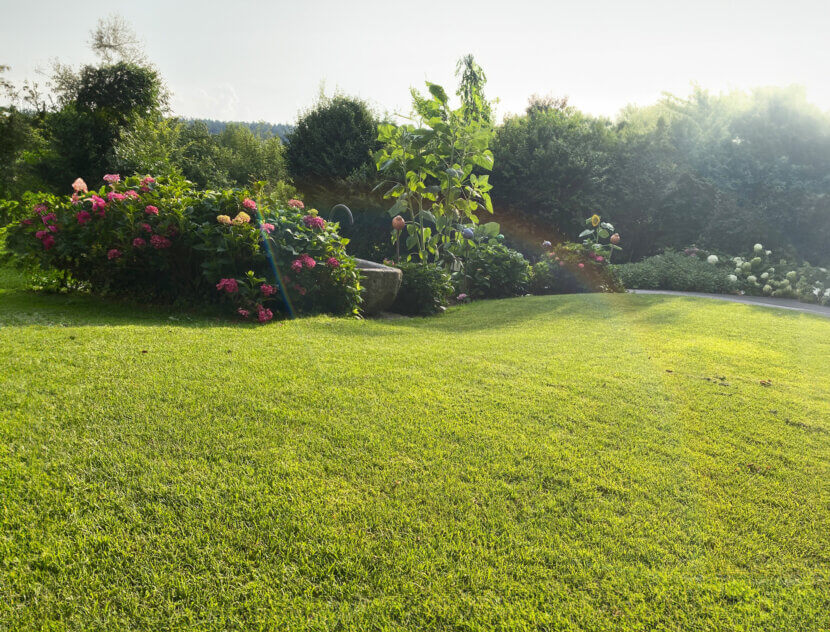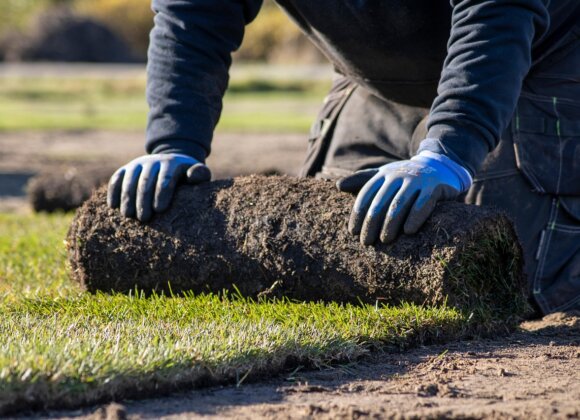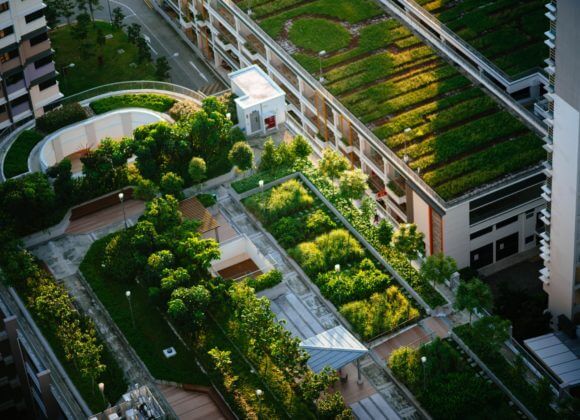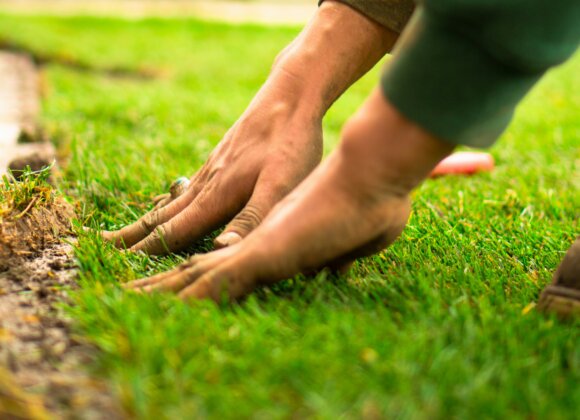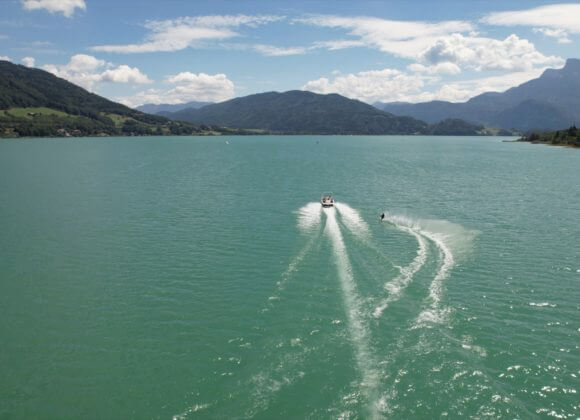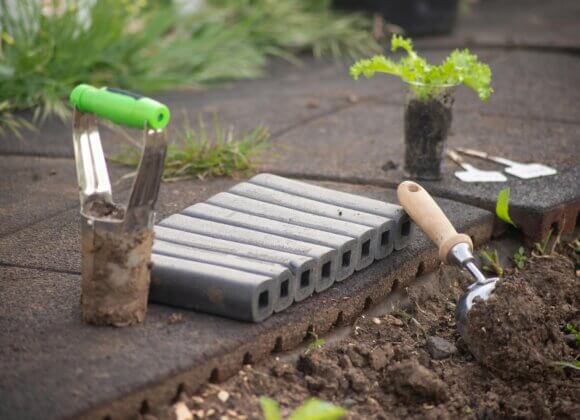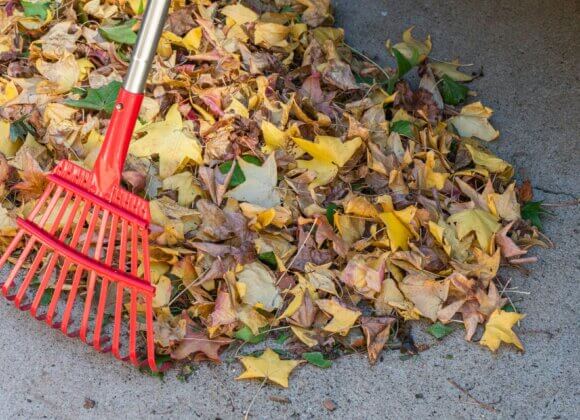Lawn care not only takes time, it also requires the necessary know-how to keep the green splendor shining in all its beauty. “It’s not just climate change that has intensified lawn care over the last 20 years, the demands on quality have also increased,” says Stephan Breisach, the Graz-based “lawn doctor”. Since founding his TURF Handels GmbH in 1994, he and his team have been taking care of the maintenance and fertilization of demanding lawns and looking after around 300 golf courses in Austria and abroad. In short: with this knowledge under his belt, Breisach knows exactly what a lawn needs to defy all adversity and shine in lush green.
Interestingly, statistics show that the dream of the perfect lawn is mainly a man’s dream. While women tend to look after the flowers and flower beds, 80% of the time it is men who look after and care for the lawn.
Mr. Breisach, let’s start with a topical issue: how can you prevent your lawn from turning brown in midsummer?
This year, thanks to frequent rainfall, we have different challenges than in the dry summers of recent years. But the worries about brown patches are familiar to many garden owners and lawn lovers. Let me put it this way: the lawn always reflects the condition in which it is cared for. It shows its well-being through lush green – or its unwellness through dryness, weeds and diseases.
To avoid problems, it is crucial to recognize the needs of the lawn at an early stage. During dry periods, you should cut out a small piece of lawn to check the soil moisture. If the soil is too dry, water immediately. If the lawn already has brown patches, it is unfortunately too late for this year. As a general rule, the lawn should be watered at high rates (12-15 l/m²) and at long intervals. We are talking about seven to ten days, depending on the weather. The lawn shows signs of wilting by changing color towards purple – then you only have a few hours to water it to prevent it from dying.
An important factor is the timing of dry spells. If they occur later in the year, the lawn can recover more easily in the fall. However, if there is a drought in spring, between April and June, you should reseed in September. This will give your lawn the best chance of starting the next year healthy and strong.
Speaking of seeds: are there “fixed” times here?
Yes, there are two ideal time windows for sowing. The first phase is in spring, i.e. from the end of April to the beginning of May. The exact time depends heavily on the weather. If it is already very hot in May, the seed can dry out quickly during the germination stage if it is not watered sufficiently.
The second optimal time window is in September, usually in the first two weeks. Here, too, you should keep an eye on the weather conditions. Sowing too late in the year is also problematic, as the temperatures and light are no longer sufficient. These two factors, along with water and soil, are crucial for the growth of the lawn.
That sounds like a lot of planning. How intensive should lawn care actually be?
Like a lawn, a lawn is a living thing – it needs to be looked after. Weeds reproduce faster than grass because they need fewer nutrients. Regular fertilization is therefore crucial to keep weeds at bay. A well-maintained lawn that is fertilized regularly can hold its own against weeds and shine in all its glory.
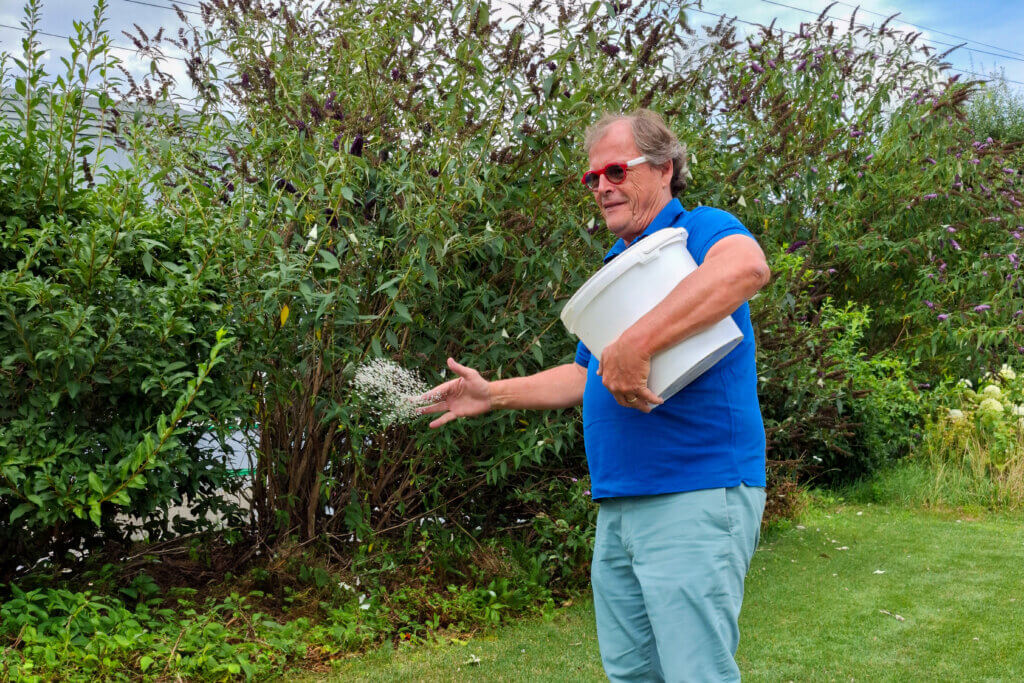
What does regular mean?
Three times a year – that’s the golden rule. But true lawn enthusiasts who don’t compromise fertilize even four times, two months apart. The fertilization season starts when the grass comes to life, around mid-April to early May.
Which fertilizers do you recommend?
For a perfect lawn, I recommend high-quality granular fertilizers, which are also available in our online store. Go for slow-release fertilizers that release the nitrogen slowly and thus promote even growth. A good fertilizer contains a balanced mixture of nitrogen, phosphorus and potassium. As every lawn is individual, it is worth consulting a specialist. It’s important to rain in the fertilizer or fertilize when rain is forecast or to water the lawn after fertilizing if you have an irrigation system.
How important are the Scarifying and aerating the lawn? At what intervals should these lawn care measures be carried out?
Scarifying the lawn is essential – once a year, either in spring or in September, the lawn is cut vertically to a depth of 2-4 millimetres to remove dead grasses and thatch. In addition, the lawn should also be aerated once a year, ideally in spring or fall. These measures loosen the soil, improve aeration and help the microorganisms to do their work, keeping the lawn healthy and well prepared for the winter.

People also like to talk about “sanding” the lawn. What does that mean?
Sanding the lawn is an insider tip for perfect soil. Sand is a common additive that increases the pore size in the soil and thus improves water and air circulation at the roots. Golf greens often consist of over 90 percent sand. Depending on the sand selected, it can also influence the pH value, water retention capacity and cation exchange capacity of the soil. This cation exchange capacity determines how well nutrients can be stored in the soil and released for the roots. In this way, the lawn is optimally supplied and can thrive magnificently.
What about mowing the lawn?
When mowing the lawn, never cut off more than a third of the plant – anything more than that means stress for the lawn. Regularity is the key to success: don’t let the lawn grow to 8 or 10 centimetres and then cut it radically. It is also important to sharpen or replace the blades of the mower – whether robot or cylinder mower – every four to six weeks. Unsharp blades tear the grass rather than cutting it cleanly, which acts like an injury and leads to high water evaporation and stress.
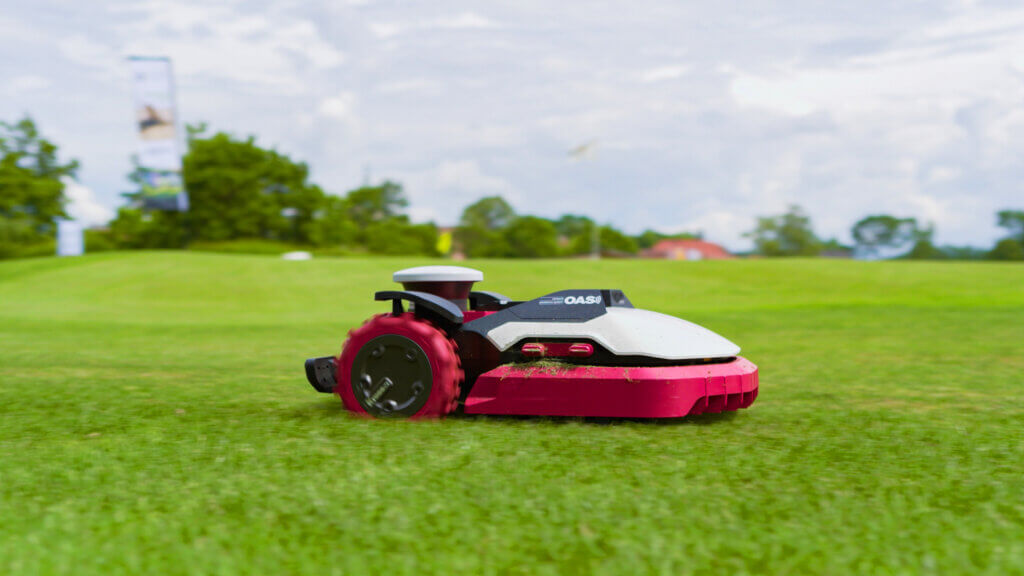
Can you explain the advantages and disadvantages of natural turf carpets compared to traditional seed? For which situations do you recommend which method?
Natural turf carpets or rolled turf offer the advantage of immediate results and are less susceptible to weeds in the initial phase. Seed, on the other hand, is cheaper and offers a greater variety of grasses in the long term. Turf carpets are well suited for smaller areas or when a quick result is desired. Whereas seed is preferable for larger areas and where the budget is lower. The subsequent maintenance of seeded lawns is much easier and less intensive.
So to summarize: a beautiful lawn is possible, but needs a lot of care and even more time? But de facto everyone could have an “English lawn” at home?
Yes, although the “English turf” is a myth, similar to the idea that every Austrian can ski. Not every Briton automatically has a perfect lawn. But in England, of course, you have the climatic advantage. Still.
All photos: rasendoktor.at
Related posts:
How robots help in the household


